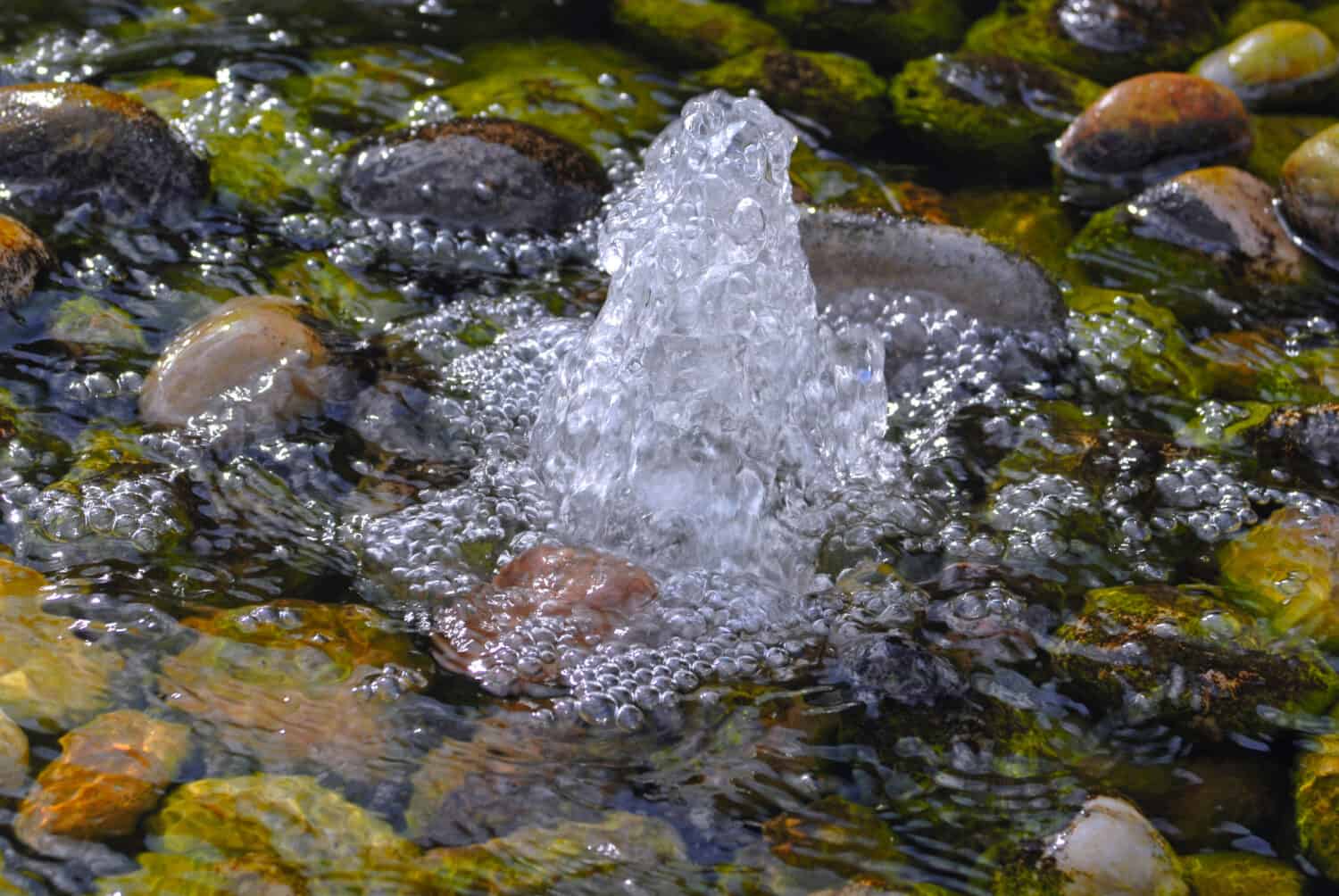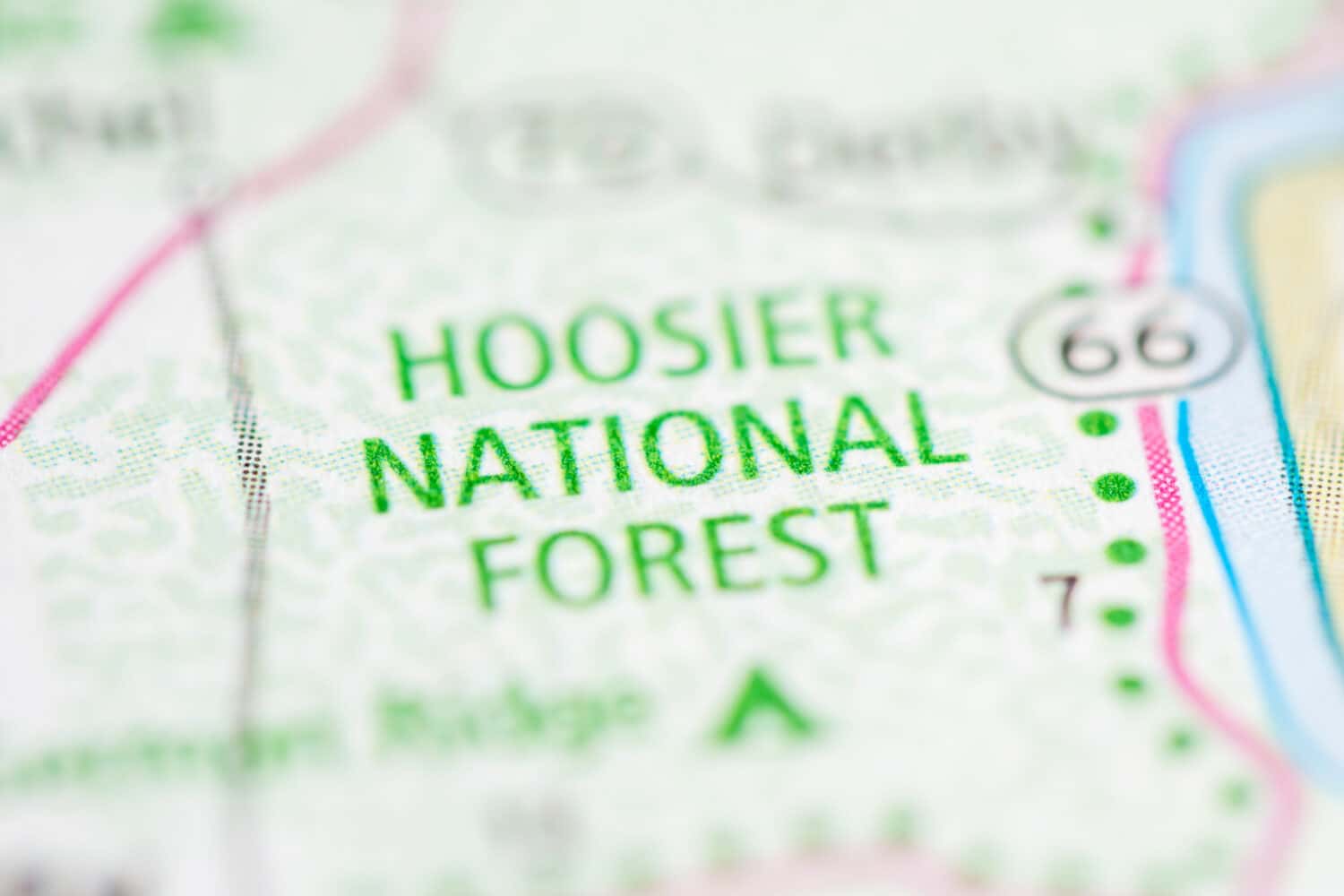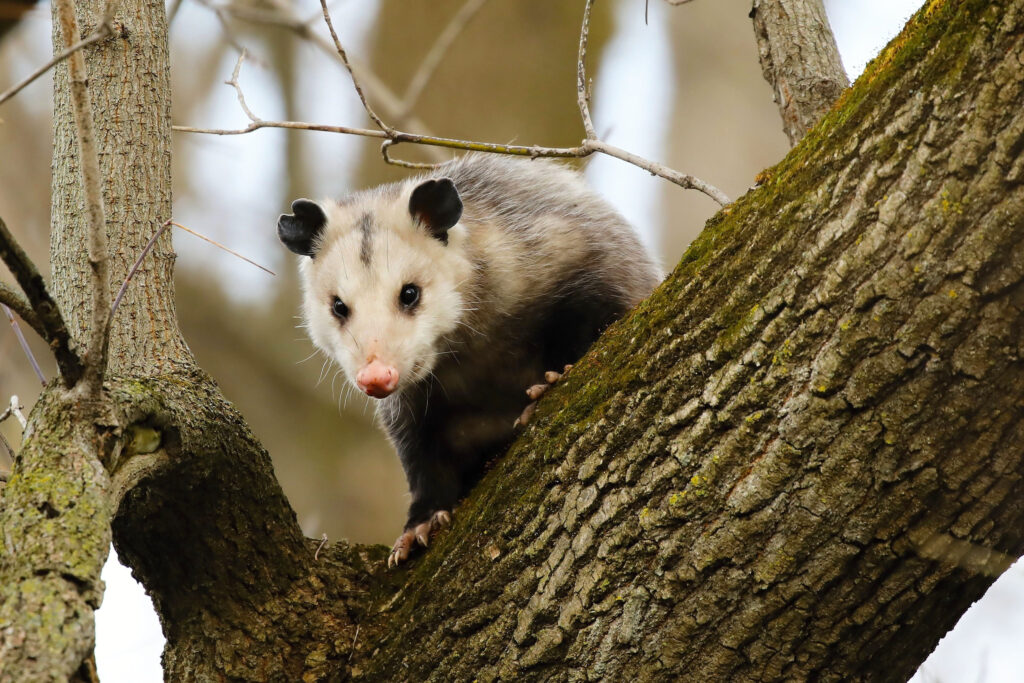
Indiana is blessed with many natural springs ranging from small trickles to raging waters. The springs in the state fluctuate during the year and need sufficient groundwater for a constant flow. People have been using springs as a local water source for decades, but due to increased contamination, it’s not a good idea to drink from a spring nowadays. Springs occur throughout Indiana; however, the largest ones are located in southern Indiana. However, it’s not just the large ones that are special. Below are 3 natural springs in Indiana and where to find them.

The largest springs in Indiana are in the southern part of the state.
©severija/Shutterstock.com
1. Harrison Spring, Harrison County

William Henry Harrison once owned Harrison Spring.
The largest natural spring in Indiana is Harrison Spring, which is located in Harrison County, just north of White Cloud near the Blue River. Harrison Spring is privately owned but once belonged to a farm owned by William Henry Harrison, one of the United State’s presidents. The spring was so productive it ran a sawmill and gristmill downstream, established in 1807, the first in the state. In 1980, Harrison Spring was registered as a National Natural Landmark. However, it’s closed to the public.
2. Trinity Springs, Martin County

Trinity Springs is in Martin County and located eight miles north of Shoals in the Hoosier National Forest.
©SevenMaps/Shutterstock.com
One of the most popular natural springs in Indiana is Trinity Springs in Martin County, situated a quarter mile from Harrisonville and eight miles north of Shoals in the Hoosier National Forest. Trinity Springs comprises three springs with a water temperature of 57.5 degrees Fahrenheit throughout the year. These popular springs produce clear, sparkling water that tastes great compared to other springs in the taste but is slightly bitter.
During the 1900s, the spring’s flowing sulfur water was a massive tourist attraction. The scenery and natural water kept tourists returning year after year as they came to bathe in the healing mineral waters. Soon, hotels sprung up in the area; six trains commuted to the springs each day. However, once the new railroad route was built, tourism to the area faded, but the springs still bubble away to this day.
3. Kneipp Springs

Kneipp Springs is about 40 miles from Fort Wayne, Indiana.
©Nicholas J Klein/Shutterstock.com
Kneipp Springs is one of the natural springs in Indiana. It was owned and operated by the Sisters of the Precious Blood from 1901 to 1976. The health resort and spa incorporated natural mineral springs into their therapies. These springs are located outside Rome City, Indiana, around 40 miles from Fort Wayne. Throughout the years, the resort had many names, including Kneipp Sanitarium, Kneipp Sanatorium, and Kneipp Springs Health Spa, and it was a destination for people seeking the Kneipp Cure—a therapy designed in the 1880s by Dr. Sabastian Kneipp, a Bavarian philosopher and priest. The Doctor sought to prevent or cure diseases by stimulating the mind, body, and spirit through hydrotherapy, like bathing in natural springs and hot and cold compresses. Additionally, he placed emphasis on exercise, herbal teas, and natural foods.
During the height of its popularity, the resort had over 20 buildings, including the physical plant, main spa building, employee residences, and farm buildings. It also had its own water tank and working farm with dairy cows, cattle, hogs, and orchards of fruit trees. Lastly, Kneipp Springs had a large garden with several herbs needed for herbal tea. At its peak, the resort received over 1,500 visitors a year, which continued for decades.
Summary of the Natural Springs in Indiana
| Number | Spring | County |
|---|---|---|
| 1 | Harrison Spring | Harrison County |
| 2 | Trinity Springs | Martin County |
| 3 | Kneipp Springs | Noble County |
Wildlife Found Around the Natural Springs in Indiana
Humans aren’t the only ones who benefit from natural springs in Indiana. Springs are also crucial to the survival of many animal species, including:
Coyote
These canines are present throughout the state and have been documented in Indiana as early as 1816. However, coyotes likely inhabited the state way before. Unfortunately, they were hunted to the point of extinction in the state from 1849 to the late 1960s. But, despite this brutal crusade, coyotes persisted in Indiana.
In the past, these canines were limited in range to the prairie regions of Indiana due to being suppressed by wolves. But, when residents eradicated the wolf population in the state, coyotes began to explore and expand their territories. Slowly, the coyote population in the state increased and continued to grow, especially in previously unoccupied habitats. Currently, coyotes occupy all of Indiana, no matter the environment or human populations in the area.

These canines are present throughout the state and have been documented in Indiana as early as 1816. However, coyotes likely inhabited the state way before.
©Warren Metcalf/Shutterstock.com
White-Tailed Deer
The only representative of the Cervidae family in Indiana is the white-tailed deer. Other members of this family include elks, mule deer, and moose. White-tailed deer are common throughout the state, as they can adapt and thrive in a wide range of habitats and environments. These deer are not grazers but concentrate selectors that selectively consume the most nutritious and palatable plant species and available plant parts. Typically, white-tailed deer consume young shoots and buds of woody plants, broad-leafed herbaceous plants, nuts and soft fruits, and sometimes grasses. Furthermore, acorns make up a large part of their diet during the fall and winter.
These deer cause major damage to corn and soybean crops in Indiana. Farmers are encouraged to work with their district wildlife biologists to come up with strategies to prevent serious damage. For example, chemical repellents, fencing, and noise devices may work in certain situations. However, the most effective prevention is carefully regulated hunting.

The only representative of the Cervidae family in Indiana is the white-tailed deer. Other members of this family include elks, mule deer, and moose.
©Tom Reichner/Shutterstock.com
Badger
The Badger belongs to the weasel family and is notorious for digging. Their strong forelegs and long claws help them seamlessly dig into the ground, chasing gophers and ground squirrels out of the burrows. These badgers fall prey to humans, dogs, roadways, and coyotes in Indiana. Their young are especially vulnerable to coyotes.
Badgers prefer to inhabit open prairie-type spaces with well-drained soils. However, they may occur in any environment with the right soil, even in forests or agricultural land. These critters are more commonly found in the northern half of Indiana, but there have been sightings in nearly 80 counties in the state. Unfortunately, most sightings are roadkills, and due to their shy nature, little is known about their population size in Indiana, though researchers do know that their numbers are increasing.
Badgers are carnivores, and their diet mainly consists of:
- Rabbits
- Snakes
- Lizards
- Frogs
- Moles
- Gophers
- Thirteen-lined ground squirrels
- Chipmunks
- Small rodents
- Snails
- Insects
- Invertebrates
- Eggs of groud-nesting birds
Furthermore, these critters will also scavenge on carcasses and are known for storing their leftovers, which they return to later.

Badgers prefer to inhabit open prairie-type spaces with well-drained soils. However, they may occur in any environment with the right soil, even in forests or agricultural land.
©Edward Hasting-Evans/Shutterstock.com
Opossum
The only marsupial native to Indiana is the Virginia Opossum. Marsupials raise their young in a pouch. While opossums eat a tick or two while grooming, they do not actively seek them out as a meal. They are omnivores, and their diet primarily consists of:
- Eggs
- Carrion
- Insects
- Worms
- Nuts
- Fruits
- Seeds
- Plants
- Frogs
- Turtles
- Salamanders
- Snakes
- Small ground-nesting birds
- Small mammals
Opossums are rare in the northern portions of the U.S. But, they have extended their range in the last century and now inhabit certain areas of Canada. However, they are abundant in Indiana and occur in every county. They struggle in cold temperatures, so, populations are low in the northern regions of the state.

The only marsupial native to Indiana is the Virginia Opossum.
©Karel Bock/Shutterstock.com
The photo featured at the top of this post is © Peterfitzgerald / This picture is not protected by copyright. The original creator released it into the public domain and has released all rights. This applies worldwide. – License / Original
Thank you for reading! Have some feedback for us? Contact the AZ Animals editorial team.







